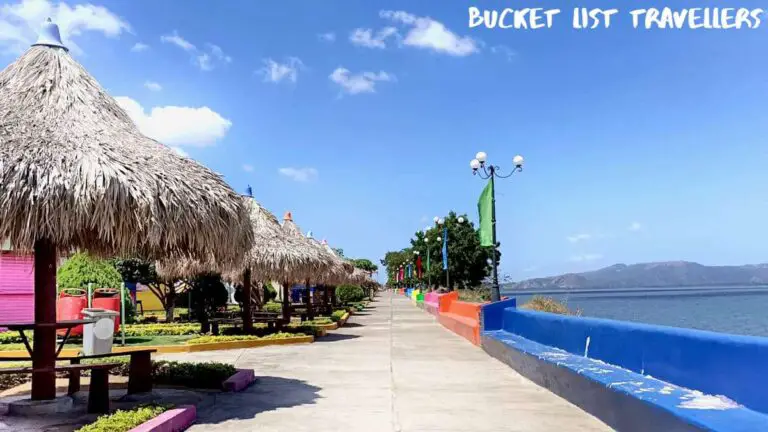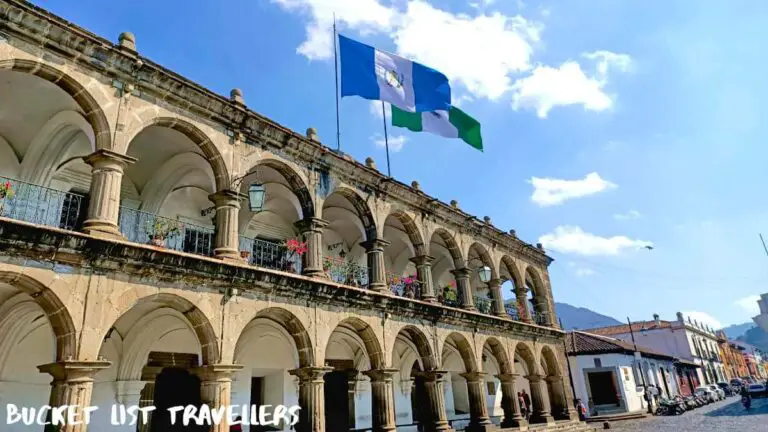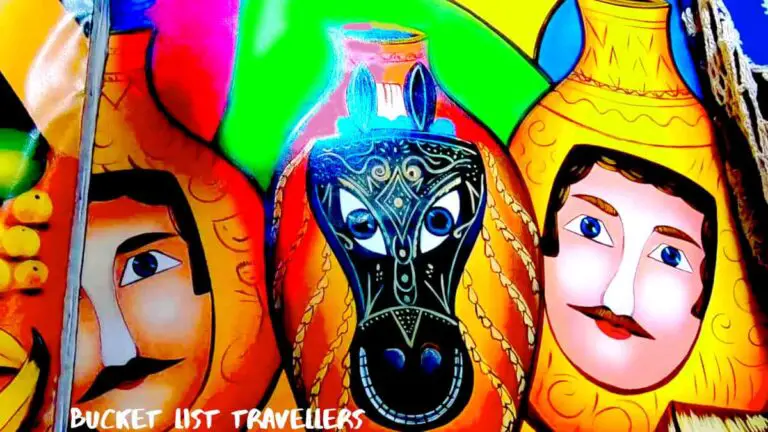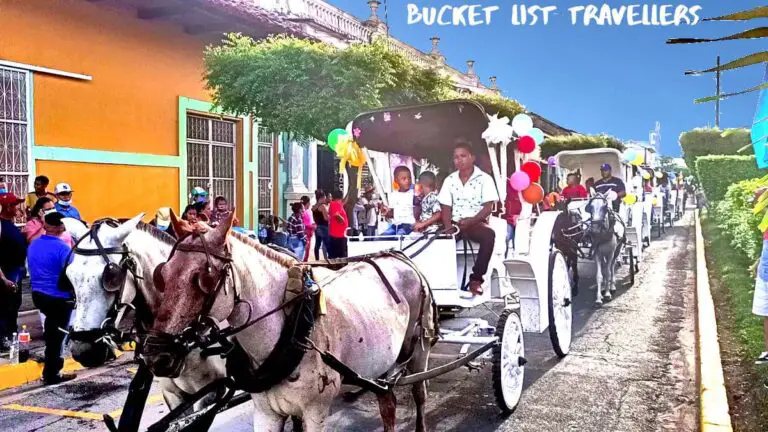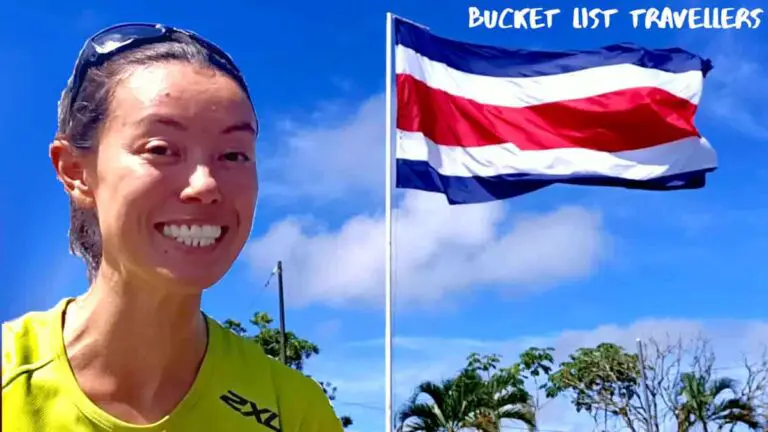How much food can you buy at the market in Nicaragua in 2021 for only $10 USD? We put this question to the test in our 10 dollar market challenge at the Granada markets! This is the first of our Nicaragua cost of living series. Nicaragua is one of the cheapest places to live in the world and we will share a taste of expat life in Nicaragua in this post.
About Nicaragua markets
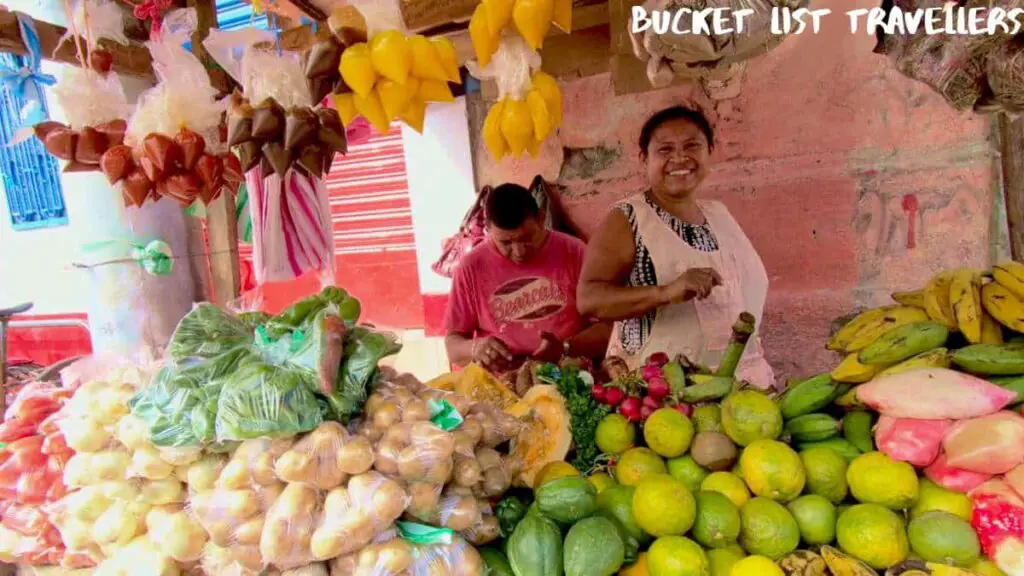
Food shopping in Granada Nicaragua
Nicaragua is one of the cheapest places to live in Central America, and it is also one of the cheapest places to live in the world. We lived in the city of Granada for a year and it was a wonderful place to live. There are a lot of options when it comes to sourcing fresh food. There are 3 different chains of supermarkets at varying price points, there are some organic produce vendors that make deliveries to order as well as there are street vendors that walk around the streets selling fruit and vegetables. But for a great local experience you can’t beat the markets!
The markets in Nicaragua are a great place to come to get fresh fruit and vegetables, refreshing drinks, fast food such as the local delicacy vigorón as well as household goods, clothing and a whole lot more! Shopping at Nicaragua markets is a great way to reduce your Nicaragua cost of living because the prices here are a fraction of what you would pay in the local supermarkets. We also enjoy shopping at the local Nicaragua markets because of their great atmosphere.
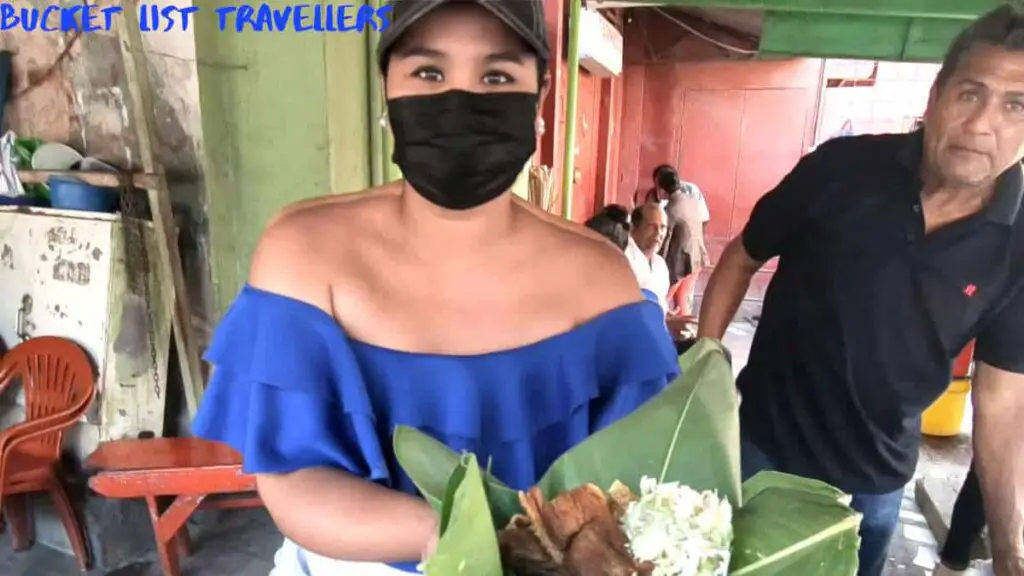
Where are the markets in Granada Nicaragua?
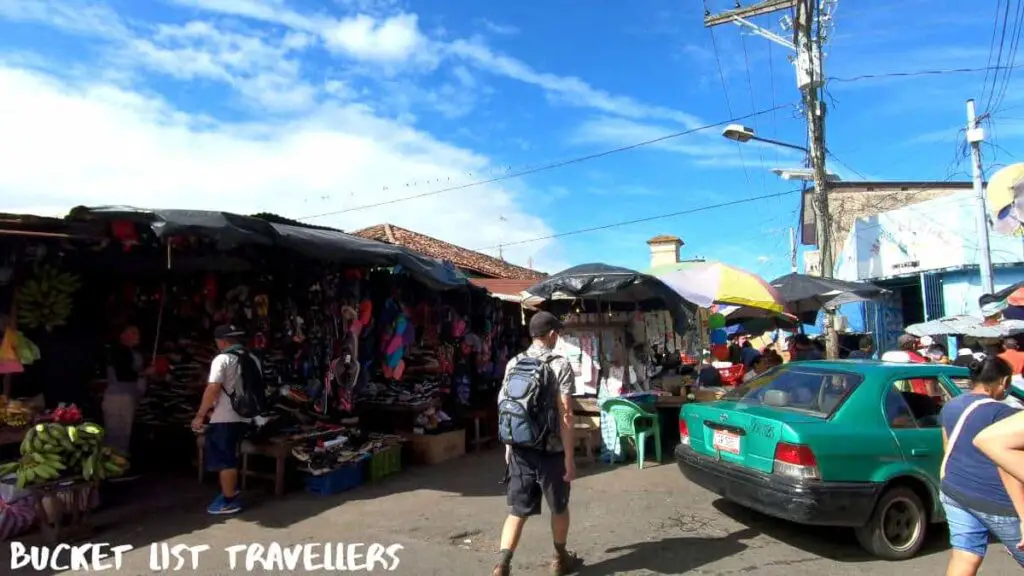
The Mercado Municipal de Granada is the main market of Granada and it is also right in the heart of the city. The main market building was built in 1892 and the market now overflows onto the surrounding streets, in particular Calle El Comercio. Additionally, there are a couple of smaller markets located around the outskirts of Granada. These include the one outside the cemetery as well as the one across the road from the UNO gas station off Calle La Inmaculada.
Money in Nicaragua
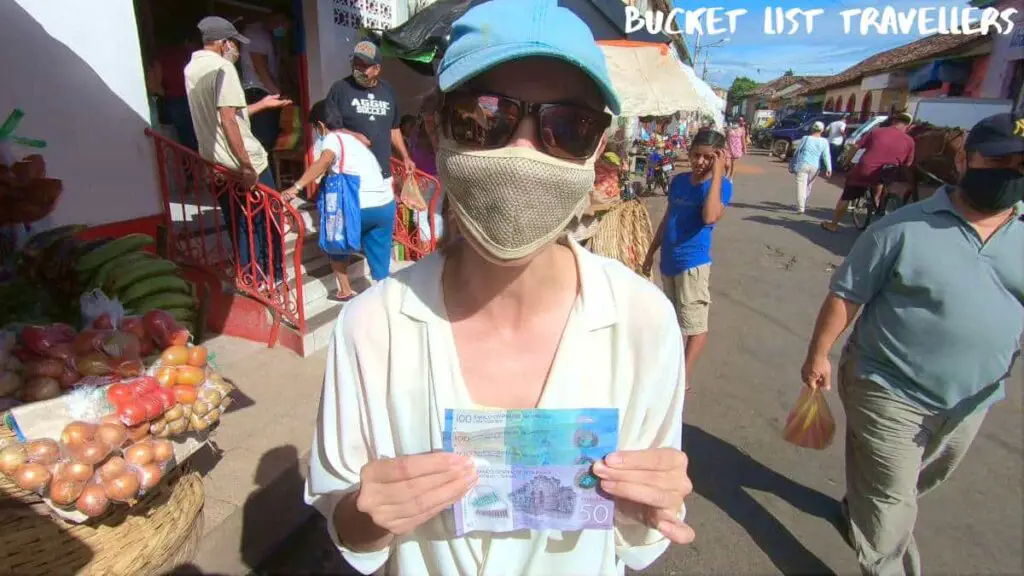
The currency of Nicaragua is the cordoba. US dollars are also accepted in many places, although you may get change back in cordobas. ATMs and money exchangers can be found in major cities but are not widespread outside of the cities. Nicaragua is a mainly cash based economy, although the larger hotels and restaurants may accept credit card, often with a fee.
As at July 2021, the exchange rate is 1 USD to 35 Cordobas.
Nicaragua cost of living: our $10 Nicaragua market challenge
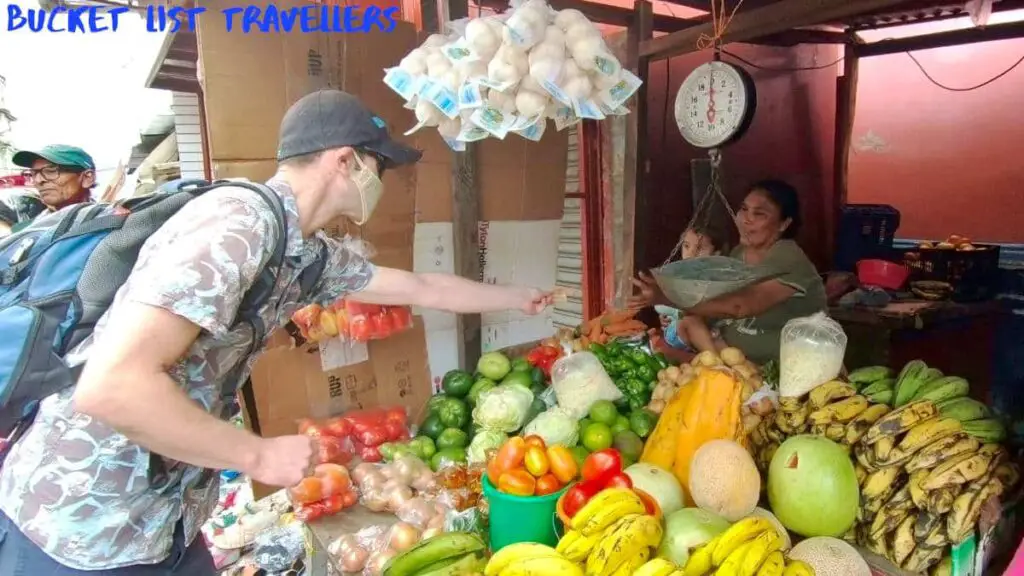
To give you an idea of the cost of living in Nicaragua, we’re going to do a $10 Nicaragua market challenge in the municipal markets at Granada Nicaragua. Specifically, we’ll show you how you how much food you can buy for $10 USD in Nicaragua.
Nicaragua cost of living: buying bananas
Our first stop was a fruit and vegetable stall where you can get 12 bananas for 20 cordobas. To put this in context, this is well under $1 USD.
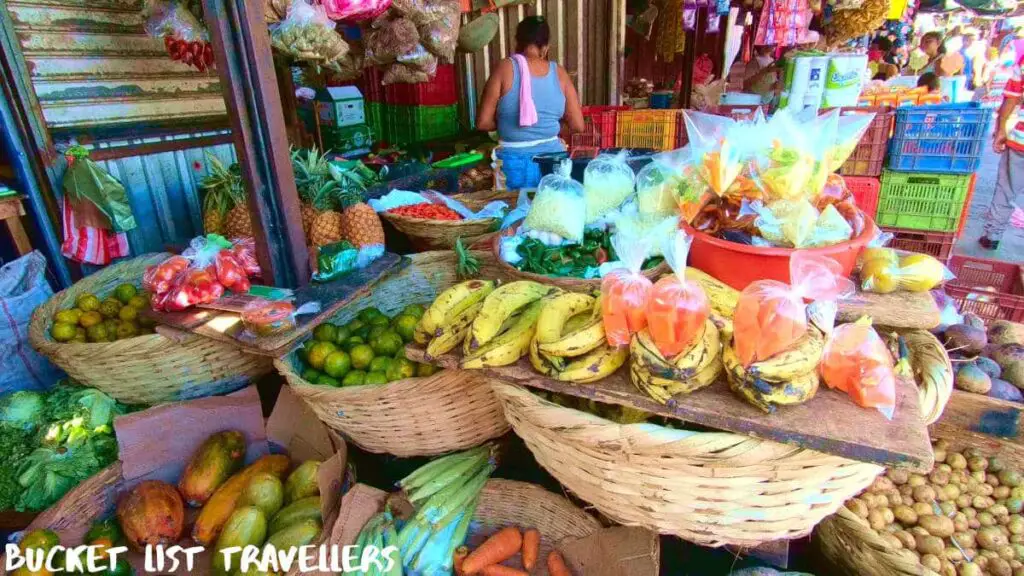
Refrescos naturales: popular drink of Nicaragua
As we were making our first purchases we were approached by a man selling drinks. Specifically, he was selling refrescos naturales, which are popular non-alcoholic drinks in Nicaragua. You can generally get a serving for 10 cordobas, which is less than 30 US cents. We’ve really enjoyed the wide range of delicious and refreshing drinks available in Nicaragua. Our favourite flavour is grama, which is made from grass and tastes very similar to cola. You can get refrescos everywhere in Nicaragua. Some people sell them out of their homes, some people walk around selling them and finally restaurants sell them as well. Great for cooling off on a hot day!
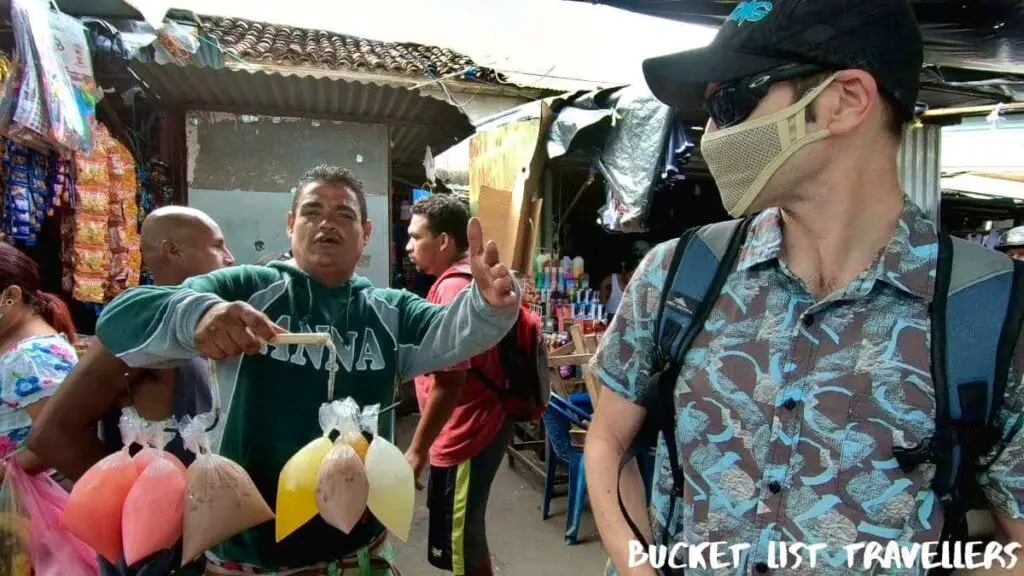
Cost of living in Nicaragua: buying bell peppers
For next purchase we got 4 bell peppers for 20 cordobas and 3 passion fruit for 20 cordobas.
Exotic fruit in Nicaragua
Fruit that we have been enjoying in Nicaragua include mandarins and bananas as well as more exotic fruits. Tropical fruit that we’ve seen in Nicaragua include papayas, dragonfruit (also known as pitaya), guavas and sapote (also known as zapote). The passion fruit that we’ve been buying in Nicaragua are huge and look a lot different to what we’re used to back in Australia. Passion fruit in Nicaragua is known as calala or maracuja.
We bought 10 limes for 40 cordobas, 1 pineapple for 20 cordobas, 1 cantaloupe for 25 cordobas, a bag of mandarins for 20 cordobas as well as 12 bananas for 20 cordobas.
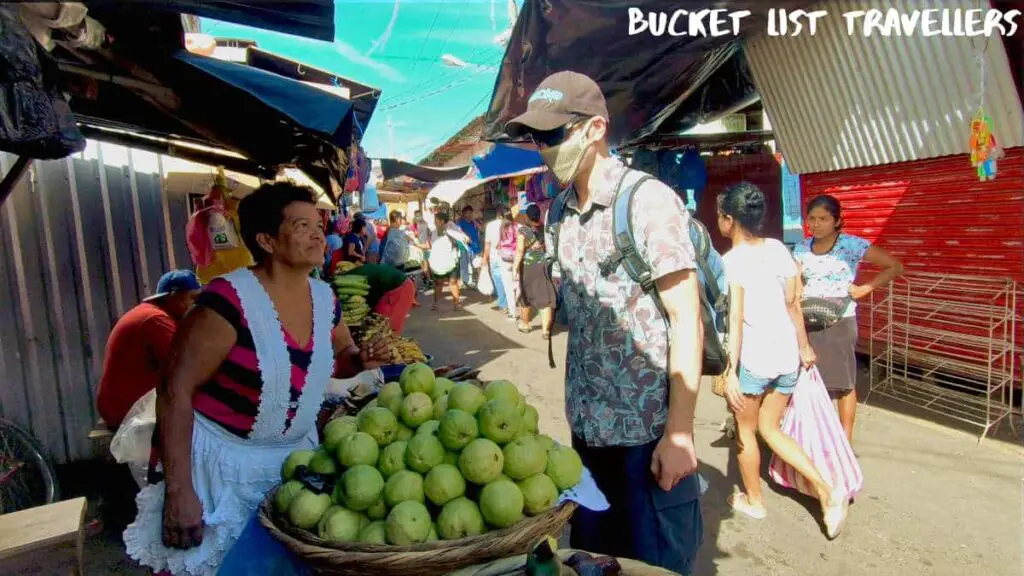
Juice vendors in Nicaragua
As we walked through the markets we marvelled at an orange juice vendor who entertained with theatrics while selling his wares. We were impressed with how expertly he prepared his freshly squeezed orange juice.
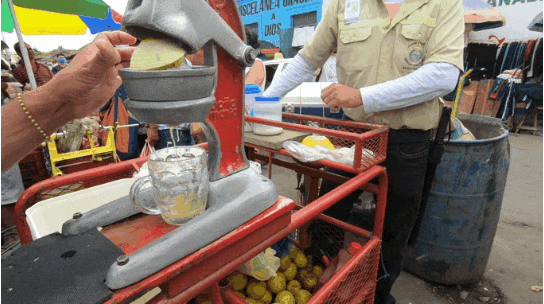
Gallo pinto: popular Nicaraguan dish
In addition to the fresh fruit and vegetables, you can also get meat, cheese and dried foods at the market. Rice and beans staple foods in Central America and gallo pinto is a very common dish in Nicaragua, made with rice and beans. Eating plenty of gallo pinto is a great way to reduce your cost of living in Nicaragua. You can have this meal for breakfast, lunch or dinner. We decided to buy one pound of beans, which cost 20 cordobas, or less than $1 USD.
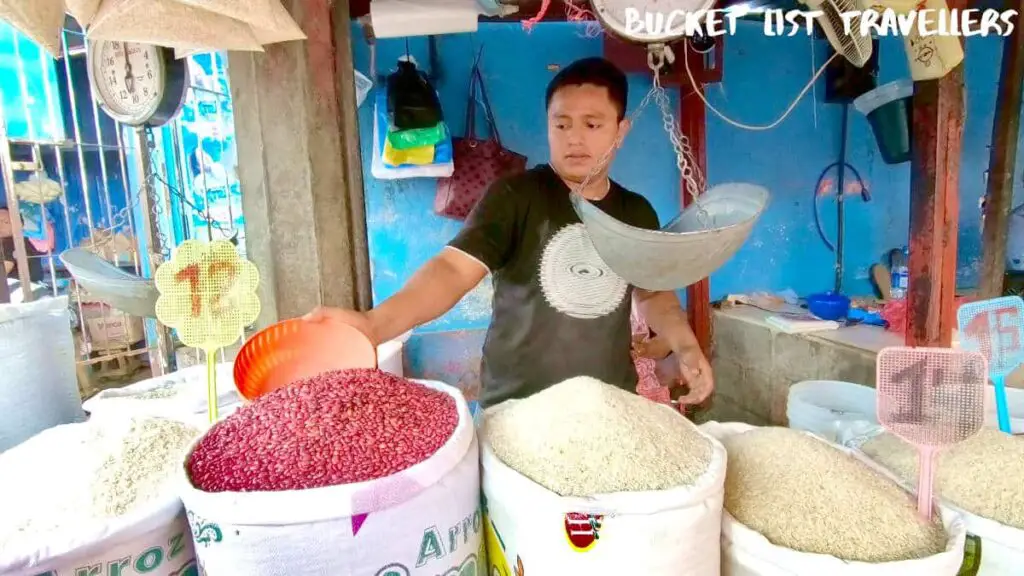
Tailors in Nicaragua
If you need your clothes or shoes repaired, the markets have you covered! Jon’s zipper has broken, but he didn’t want to take his pants off in the middle of the market, so we might have to come back another day!
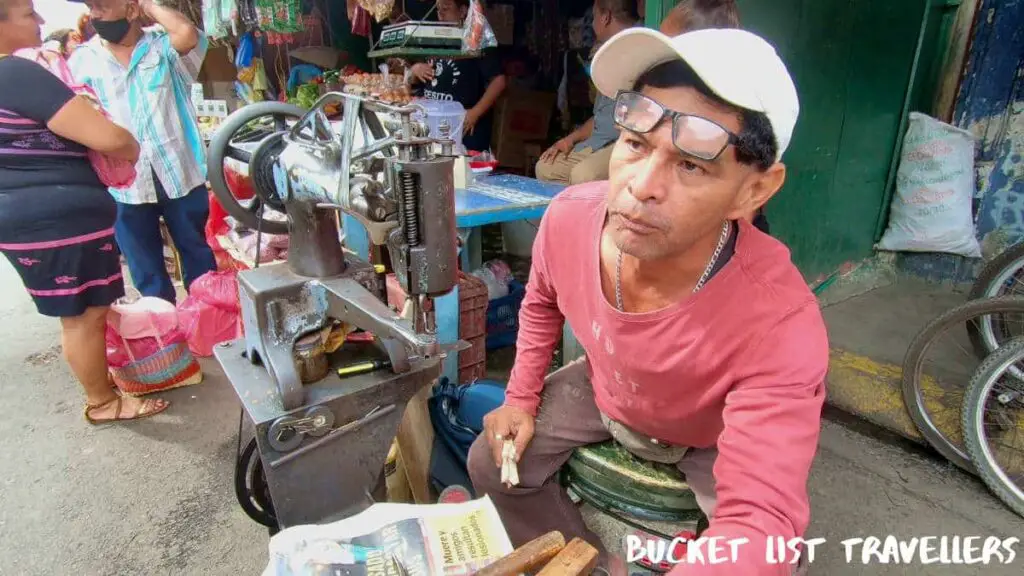
Buying seasonal food in Nicaragua
The produce in the markets in Nicaragua are local and seasonal. In January avocados had just come back into season and we bought 2 for 20 cordobas. At the time of writing we’re on the Pacific Coast of Nicaragua in July towards the end of the season and you can now get 4 avocados for 20 cordobas and a very large avocado costs 30 cordobas. In some parts of Nicaragua, rather than going to the markets for your fresh produce there are vegetable vendors that sell fruit and vegetables from the back of their vans.
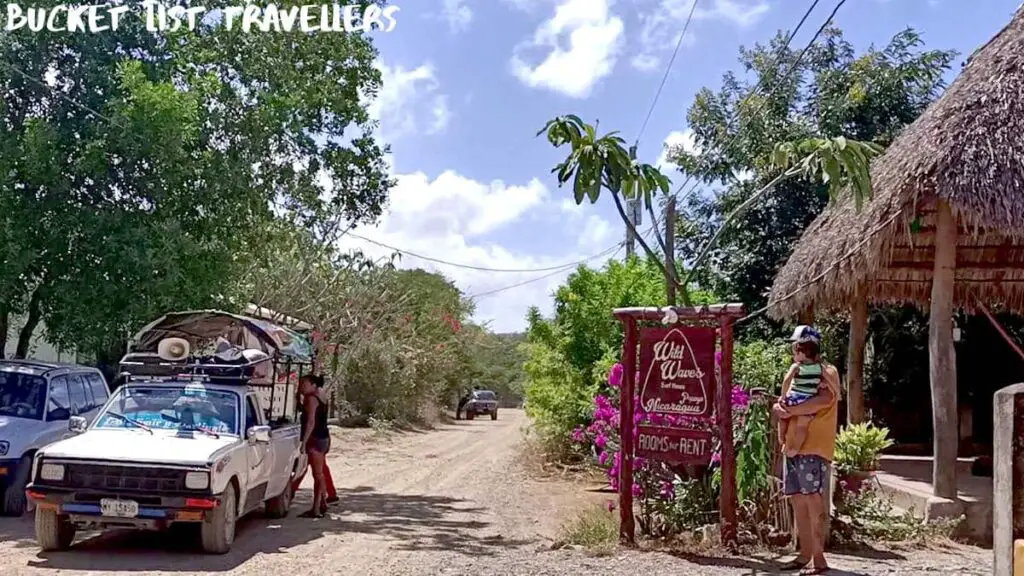
Why to shop at local Nicaragua markets
Shopping at the market in Nicaragua is a daily ritual for many people in Nicaragua and it’s a great thing to be able to experience the local way of life. It is also a great way to have a lower cost of living in Nicaragua and you also get to meet some lovely people.
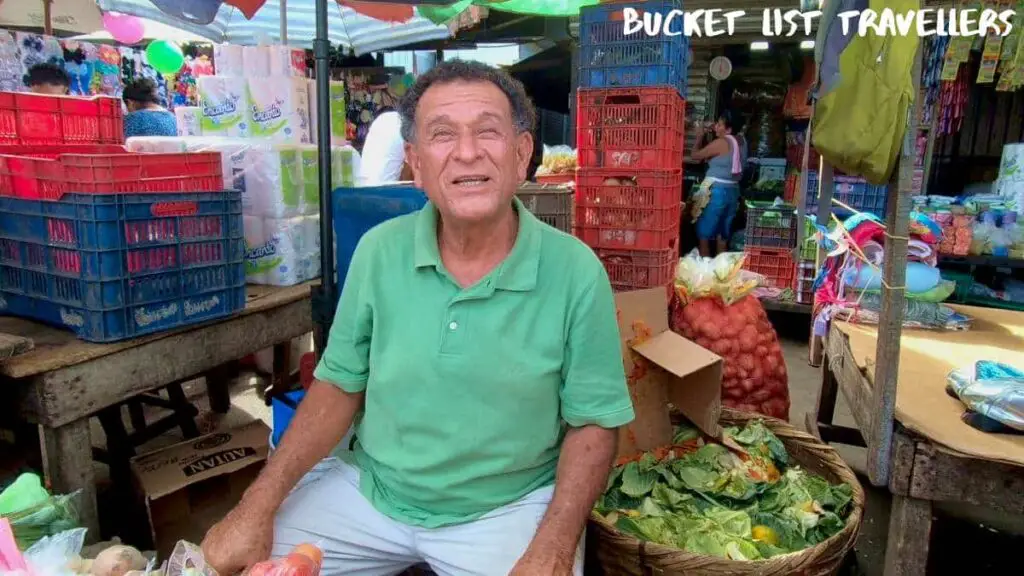
The market flows down one of the main streets of Nicaragua, and pedestrians and vendors weave there way past vehicles that also use this road. Every once in a while a big bus will come through, taking up most of the street and everyone just shifts out of the way. It’s chaotic, but somehow everything works!
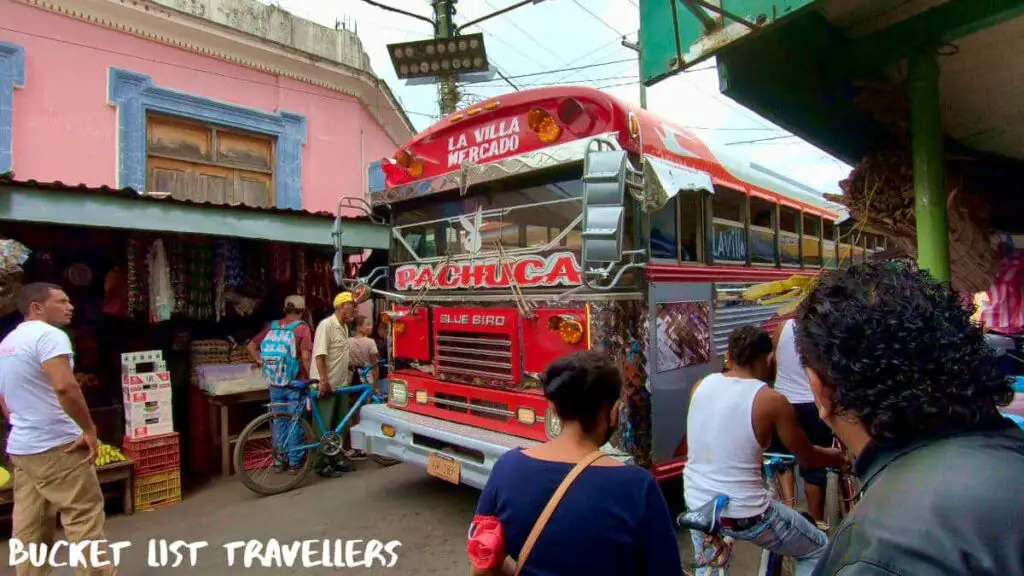
Buying eggs at the market in Nicaragua
Chickens are plentiful in Nicaragua and they often are able to roam freely where ever they please. Eggs are a lot cheaper here than back home in Australia. In Australia you can expect to pay around $4 USD for a dozen eggs, whereas in Nicaragua you can get 30 eggs for that amount! We paid 125 cordobas for 30 eggs.
And with buying the eggs we’re all done. Let’s go home and have a closer look at what we bought with our 10 dollar market challenge!
Nicaragua cost of living: Nicaragua market haul
We were impressed with the amount of food we were able to buy at the markets in Nicaragua for just $10 USD or 350 cordobas. It’s just amazing value!
For $10 USD we were able to buy:
- 4 bell peppers (20 cordobas)
- 2 pounds of tomatoes (20 cordobas)
- 2 avocados (20 cordobas)
- 10 limes (40 cordobas)
- 1 bag of mandarins (20 cordobas)
- 12 bananas (20 cordobas)
- 1 pineapple (20 cordobas)
- 3 passion fruits (20 cordobas)
- 1 cantaloupe (25 cordobas)
- 30 eggs (125 cordobas)
- 1 pound of beans (20 cordobas)

Getting to markets in Nicaragua
Local markets can be found in any town or city in Nicaragua. Granada is a very walkable city, so we just walk to the markets. A taxi ride from anywhere around town should only cost you around 20 cordobas or less than $1 USD.
How long to spend at markets in Nicaragua
You can get a good feel for the markets and buy all you need in around an hour. If you like soaking in the atmosphere or want to stop for some street food while you’re there, allow an extra hour or so.
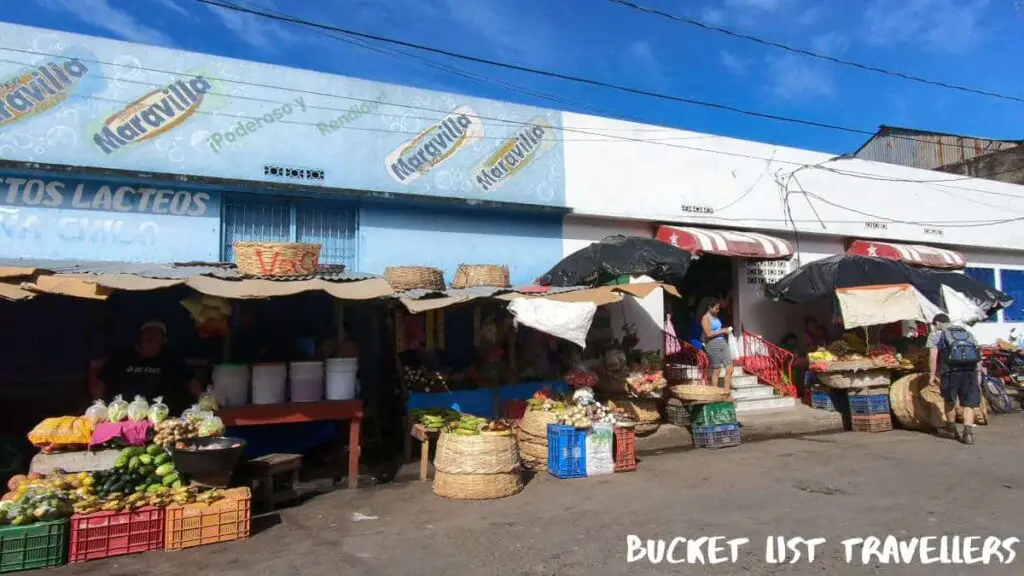
Where to stay when visiting markets in Granada
Hotel La Gran Sultana is right next to the markets and is in a very convenient place for exploring the markets. We stayed at this mid-budget Granada hotel for a couple of weeks and enjoyed their central location, beautiful rooftop balcony, comfortable rooms and delicious breakfasts.
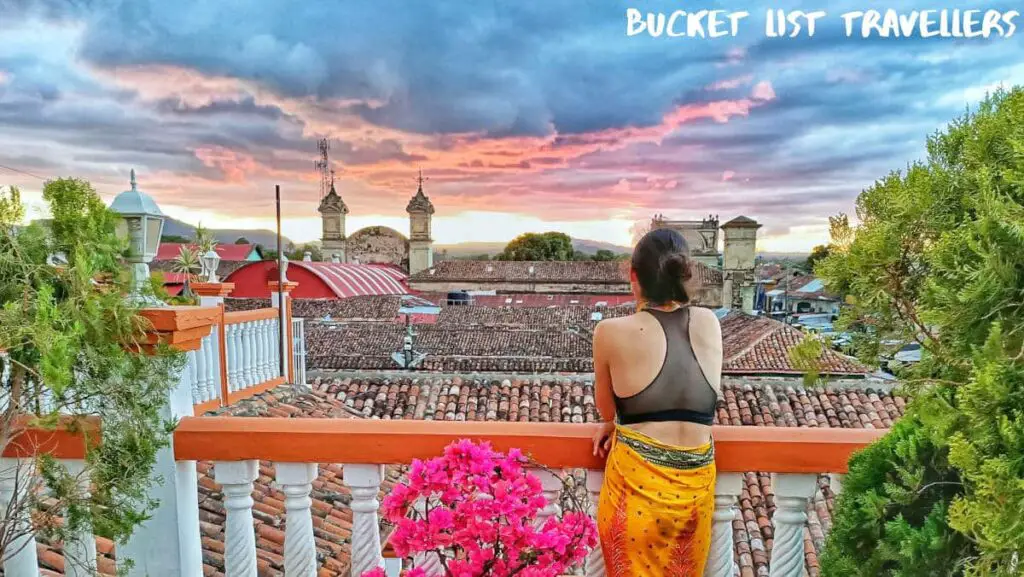
Are markets in Nicaragua safe?
Nicaragua is one of the safest countries in Central America. Petty crime is a risk, so ensure you keep your valuables secure and out of public view where possible. Markets are crowded places, so there is potential for pickpocket and snatch and run thefts. We personally haven’t had any issues, but keep your wits about you!
Other general safety considerations for visiting the markets in Nicaragua:
- Drinking water – The tap water in most major cities in Nicaragua is safe to drink, however most visitors opt to drink bottled water.
- Mosquitoes – Mosquitoes are common in Nicaragua. We recommend wearing insect repellent and consulting with your doctor about whether you require anti malarial medication when visiting Nicaragua.
- Road safety – The markets spill out onto the road where you will share the space with cars, motorbikes and large buses. Keep your eyes out for oncoming vehicles.
- Sun safety – The UV Index is very high in Central America, so sun protection such as sunscreen, a hat and sunglasses is very important to ensure you don’t get burnt. There is generally a lot of shade in the actual markets, but there may not be much sun cover when walking to or from the markets.
- Dogs – In many countries in Central America, stray dogs are common. We noticed many stray dogs around the central market of Granada and at night they may bark at you. For more on dog safety while travelling, check out this video.
As with any destination, take all of your normal safety precautions.
Final thoughts on markets in Granada Nicaragua
Visiting the local markets is a great way to immerse yourself in the daily life of an area. If you want to learn more about visiting Markets in Nicaragua, check out our Markets in Nicaragua video.
Nicaragua Blogs
You can find our Nicaragua blogs below.
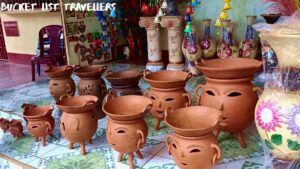
San Juan de Oriente Nicaragua: Destination Guide
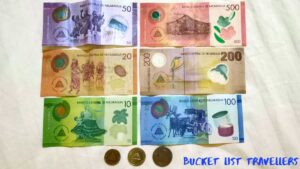
How to Get Money in Nicaragua
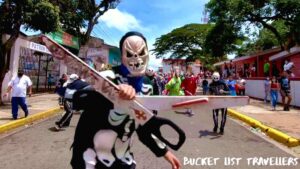
Nicaraguan Festival: Tope de los Santos
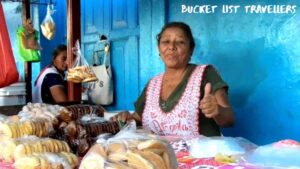
Nicaragua Cost of Living: $10 Market Challenge
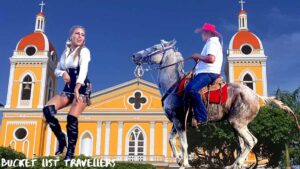
Hípica: Nicaragua Dancing Horse Parade

Mombacho Volcano Hike: Day trip from Granada Nicaragua

Las Isletas Boat Tour: Best Thing To Do in Granada Nicaragua

Granada Nicaragua Day Trip to Laguna de Apoyo!

10 Most Surprising Things About Living in Nicaragua!
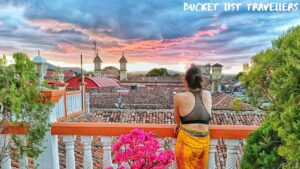
5 Most Surprising Things About Visiting Nicaragua!
Affiliate Links
This website contains affiliate links, which means we may earn a commission on any purchases at no additional cost to you. Your support helps us continue our travels and make more travel blogs and travel videos, thank you!

